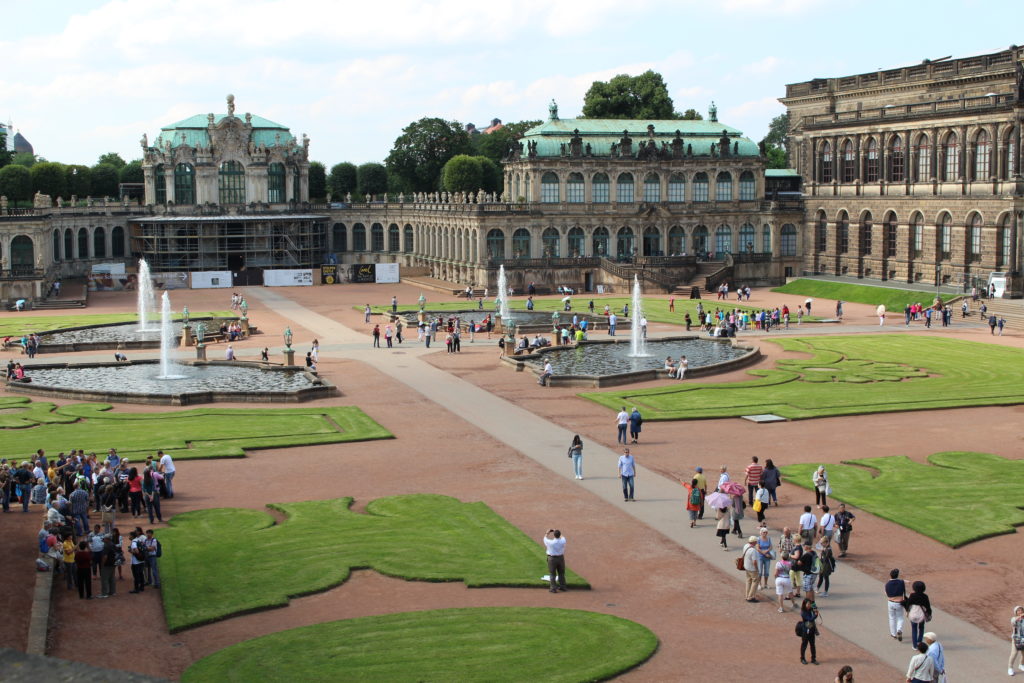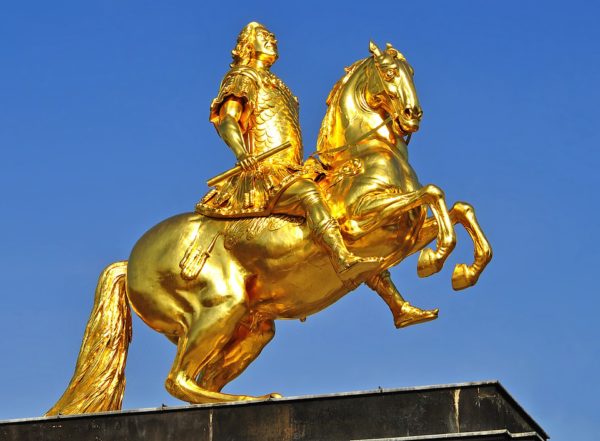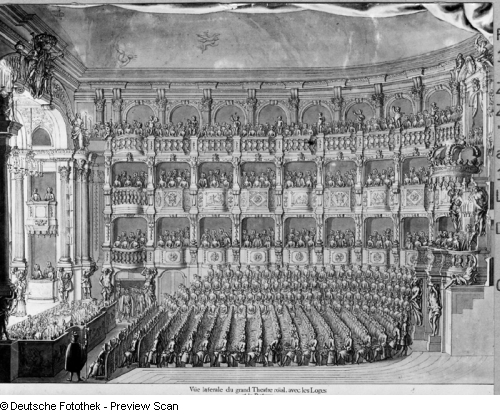
In Telemann’s time, the city of Dresden was something out of a fairy tale. In the upcoming show Fire and Invention: Telemann’s Showpieces for the Dresden Virtuosi, Tempesta di Mare revisits Dresden’s magic moment with its largest orchestra yet, 31 players—the same size as Dresden in one of its legendary iterations.
But Dresden was real, made out of bricks, mortar, talent, the best art and music in Europe and the indomitable vision of its ruler. During his reign, August the Strong, Elector of Saxony and King of Poland, ushered the old medieval river fort into a moment of epic magnificence.

Fabulousness wasn’t just a rich man’s hobby. It had the strong edge of practicality. Like his fellow potentates, August dreamt of power. His strength wasn’t military, though—he seems to have been a pretty miserable military strategist, actually. His strength was in the arts. At a time and place where culture was politics and magnificent display bought international respect, August conquered northern Europe.
From the late 17th century through the 18th, August—and his son Augustus III—made Dresden a destination city almost on modern lines. As the nascent economy of tourism grew, visitors made Dresden a “must see,” coming from all over to drink in the city’s golden ambience, giving it the nickname the “Florence on the Elbe.” August transformed the city with the construction of the Zwinger palace, his jaw-dropping answer to Versailles (which included a 2,000-seat opera house, one of the biggest in Europe). He bought amazing art. “Dresden will from now on be an Athens for artists,” wrote 18th century historian Johann Joachim Winckelmann.
And he fielded what was probably the best orchestra in Europe, the Dresden Hofkapelle. His musicians were superstar players from all over the continent molded into a rock-hard ensemble. “[August’s orchestra] achieved a finesse of performance that I never heard surpassed in all my later travels,” wrote J. J. Quantz, flutist to Frederick the Great.
August spared no expense. He footed the bill so that every musician in the Hofkapelle was a specialist and at the top of his field, not pinch-hitting on a variety of instruments as was convention. His string section played on matched Stradivari he purchased from the Venetian master in 1715. Horns were a long-time Dresden specialty, but August’s horn section reached dizzying heights of virtuosity.

And August made pains to keep up with the competition: he took his concertmaster, Johann Georg Pisendel, on periodic tours of rival ensembles in places like France, Vienna, Rome, and Berlin, a sort of ongoing professional development. A visit for Pisendel to Venice turned into a months-long stay while he studied with Vivaldi.
For Georg Philipp Telemann, the Dresden Hofkapelle was a dream come true.
Through Pisendel, one of his oldest friends, Telemann had special access to the Hofkapelle. The two met when Pisendel was barely 20 and Telemann slightly older and more established; their friendship endured decades, right up to the time that they were old men trading plants and gardening news.
Pisendel and Telemann encouraged each other in many ways, but Pisendel’s endless enthusiasm for his old friend and mentor’s work may have been the most important to Telemann. Pisendel owned more than a hundred of his old friend and mentor’s compositions and programmed his music with the Hofkapelle more than anybody else’s.
It galvanized his writing, says Gwyn Roberts, Tempesta artistic co-director. “Knowing that he had this incredible musical machine at his disposal in Dresden kicked Telemann’s writing to a different level,” she says.
The concerto-suite in F on Tempesta’s program is a brilliant case in point, she says. Telemann wrote it specifically for Pisendel when both were in late peaks of their careers. Telemann gave his friend whip-fast, over-the-top virtuoso passages. “But it’s not just in terms of the demands he’s willing to make on players,” says Roberts. “It’s in the scope of the writing. There’s just the incredible color, the variety, the luxury of that orchestra and he really dug into it.”
It’s Telemann at the very top of his powers, says Roberts. With the best Europe could offer at his fingertips, “he just goes everywhere you can possibly go with it.”
Happily ever after.
____________________
Anne Schuster Hunter is a writer, writing teacher, and art historian in Philadelphia. www.anneschusterhunter.com
